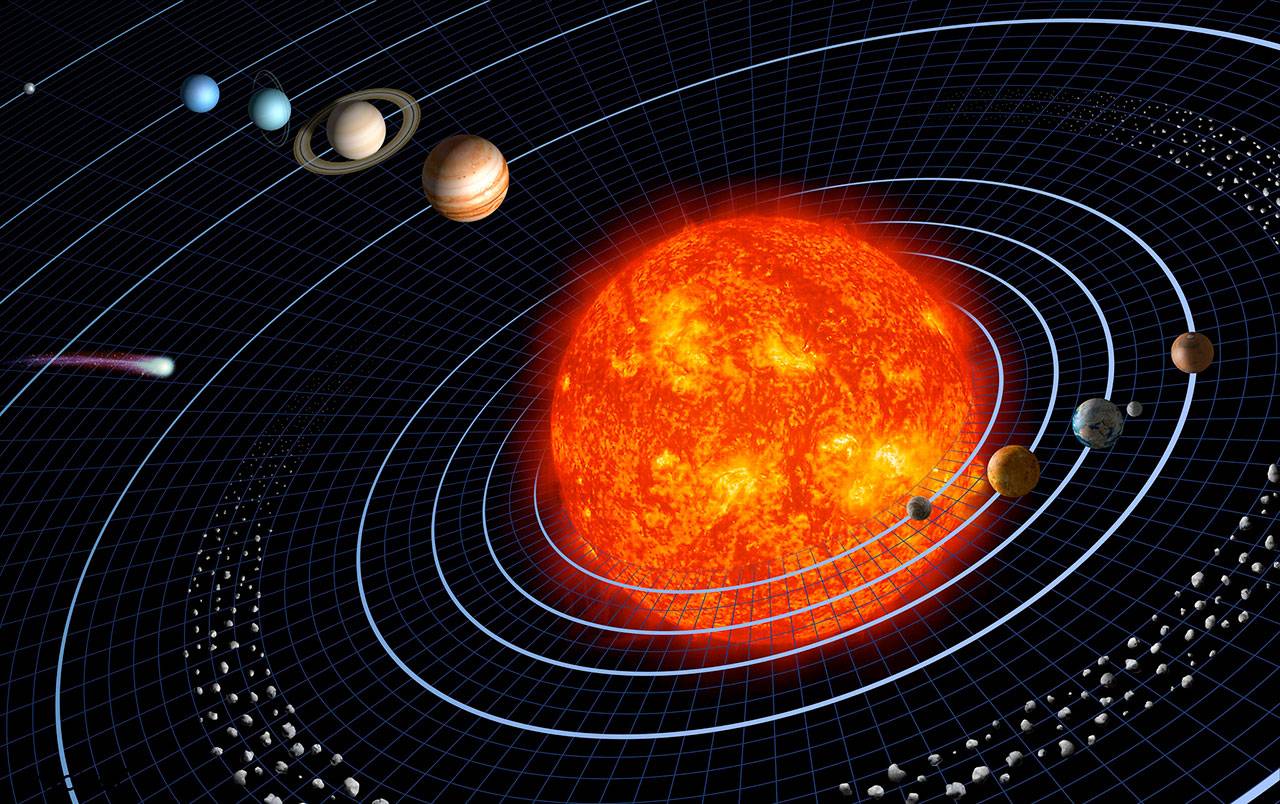Just How Powerful is the Sun?

The Sun at the centre of our solar system is the very reason that life exists on Earth. Humans have been studying the Sun for thousands of years, and even now it’s often the subject of science incursions and school curriculums!
Located about 150,000,000 kilometres away from Earth, the Sun continuously creates the light, heat and energy that we need to thrive. As the most powerful force in our solar system, it’s worth knowing everything you can about the Sun. To help out, we’re going to dive deeper into the science behind the Sun to figure out exactly how powerful it is!
What is the Sun?
There are no surprises here – the Sun at the centre of our solar system is actually a star. Just like the other 100 thousand million stars in the Milky Way Galaxy, our Sun is a ball of molten energy that was formed billions of years ago from the cloud of gas that once lived at the heart of our solar system.
Over billions of years the Sun compressed the gases in our galaxy, drawing in so much matter that it’s now about 1.3 million times the size of the Earth. The Sun is so large that the effects of its gravitational pull can be observed billions of kilometres away at the edges of our solar system. Despite its incredible size and weight, the Sun isn’t a solid planet like Earth or Mars. Rather, it’s made of a superheated matter called plasma. The Sun’s plasma is so hot that it reaches temperatures of more than 5,500°C at the coolest areas, and more than 15 million degrees at its core.
Why is the Sun So Hot?
The Sun is capable of reaching such incredible temperatures thanks to its massive size and the energy being released by the fusion reaction at its core. And it’s that fusion reaction that’s key to all life on Earth.
In the core of the Sun, hydrogen atoms are forced together under immense pressure. As these atoms collide, they combine to form helium atoms in a reaction that’s known as fusion. Each individual fusion reaction releases large amounts of energy. In fact, every time 1 gram of hydrogen is fused into helium atoms, the fusion reaction releases enough energy to power an 15W LED light bulb for over 100 years! And, when you consider that the Sun consumes about 620 million tonnes of hydrogen every second, it’s easy to see why it’s the most powerful object in our solar system.
The Power of the Sun
With a fusion reaction that’s consuming 620 million tonnes of hydrogen per second, it can be hard to picture just how powerful the Sun is.
To put it into perspective, scientists estimate that the Sun produces about 3.8 x 10²⁶ joules of energy every second. On Earth in 2021, the total amount of energy consumed by humans was about 5.8 x 10²⁰ joules. This means that every second of every day, the Sun makes about 650,000 times more energy than the entire Earth uses in a year!
That’s obviously a lot of power, but it’s worth remembering that not all that energy reaches the Earth. Only half of the Earth receives direct sunlight at a time, and we’re only facing one side of the Sun, but we still collect more than enough energy to power the Earth using solar panels alone.
The Sun and Renewable Energy
Humans have relied on fossil fuels to provide power for hundreds of years. Burning coal and oil is an important part of how our society works, but it’s taking its toll on the Earth. These days we’re making a shift towards renewable sources of energy that have less of an impact on the environment, and the Sun makes these possible too:
- Hydropower. The water we collect in dams has been used to generate power for hundreds of years. But, without the Sun there would be no rain, our rivers wouldn’t flow and there’d be no way to collect hydroelectric energy.
- Solar power. You’re probably familiar with solar panels by now. Using special silicon cells that absorb the Sun’s energy to create electricity, solar panels can provide energy whenever the Sun is shining.
- Wind power. One of the world’s fastest growing renewable energy sources, wind power is also possible thanks to the Sun. As the Sun heats the Earth, some areas get more heat than others, and this creates differences in pressure that cause the air to move. In some areas the air moves so much that we can use giant wind turbines to harvest the energy and turn it into electricity!
As you can see, the Sun isn’t just behind life in our solar system, it’s also the reason we live as comfortably as we do. With the power to grow crops, generate electricity and influence Earth’s weather patterns, there’s little wonder that science incursions about the Sun are so popular!

